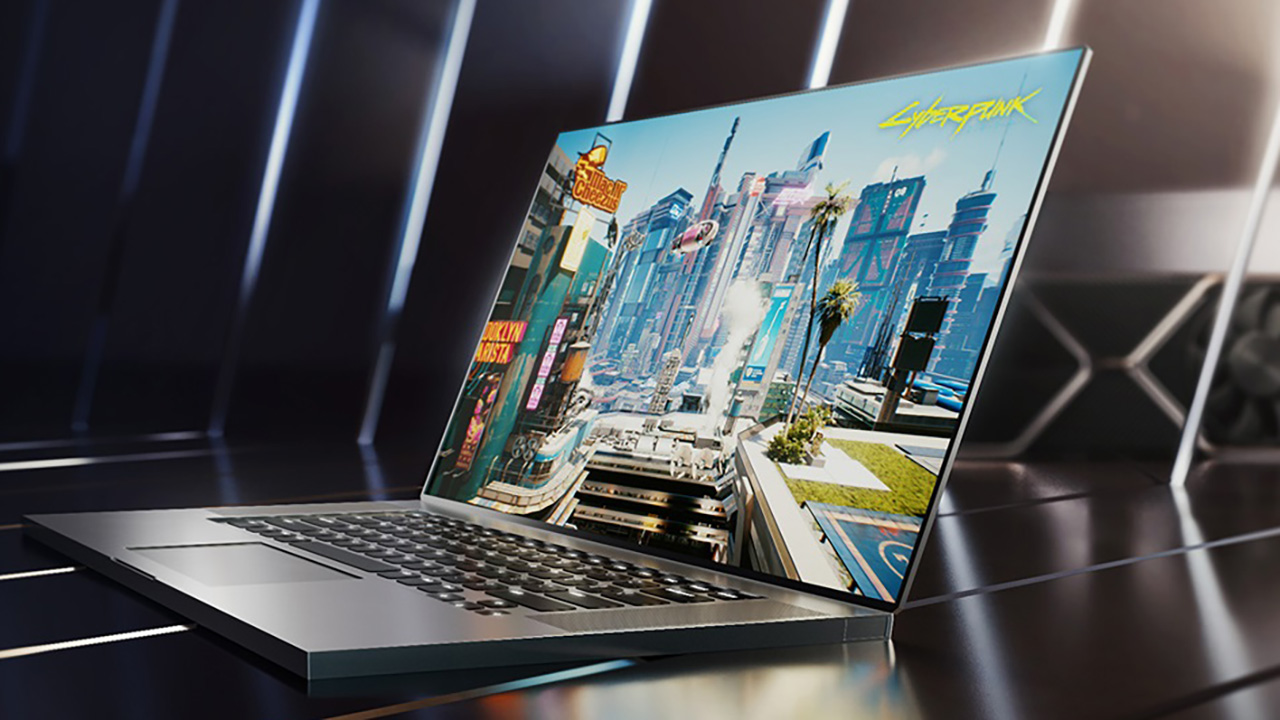GeForce RTX 3000 for notebooks: Max-Q disappears, but in reality it's still there
Source: HW Upgrade added 22nd Jan 2021
There is a little confusion about which versions of GeForce RTX GPUs are 1859, including standard and Max-Q, which will debut in new gaming notebooks. Let’s try to understand what is the approach taken now by NVIDIA
of Paolo Corsini published 22 January 2021 , at 12: 01 in the Video Cards channel
Max-Q NVIDIA GeForce RTX
Al CES 2021 , held in the online form only last week, NVIDIA announced the new range of GeForce RTX video cards 1859 for sistem notebooks . The models presented are those GeForce RTX 3080, GeForce RTX 3070 and GeForce RTX 3060 with technical specifications summarized in the following table:
| GeForce RTX 3080 | GeForce RTX 3070 | GeForce RTX 3060 | |
|---|---|---|---|
| GPU | GA 104 | GA 104 | GA 106 |
| CUDA Core | 6144 | 5120 | 3840 |
| Freq. Boost | 256 – 1710 MHz | 1290 – 1620 MHz | 1283 – 1703 MHz |
| Bus | 256 bit | 256 bit | 192 bit |
| Memory | 8 GB / 16 GB GDDR6 | 8 GB GDDR6 | 6 GB GDDR6 |
| TGP | 80 W – 150 W | 80 W – 125 W | 60 W – 115 W |
How can you note, NVIDIA indicates a broad range llo of boost clock frequency and TGP (maximum total consumption of the video card, therefore including GPU and the remaining components) for each of these GPUs in order to better adapt to the characteristics notebook in which they are used. Previously the American company has indicated with the acronym Max-Q the versions of GPU more par in consumption , therefore think for the combination with notebooks of compact dimensions, leaving the Max-P to identify the models more performing with higher clock and obviously higher consumption.
Various notebooks based on NVIDIA GeForce RTX GPU (and GeForce GTX before) have therefore appeared on the market, with some models equipped with indication Max-Q to indicate a lower-power GPU version. For the Max-P declinations in general the manufacturers have chosen to omit the initials, leaving only the name of the GPU making it correspond in this case to the version with the most extreme technical specifications.
With GeForce RTX cards 3000 for notebook systems NVIDIA introduces the third generation of Max-Q technology to identify not only lower clock and TGP frequencies with the same technical characteristics compared to standard versions, but also a series of complementary technologies (Dynamic Boost 2, WhisperMode 2 and Advanced Optimus among others) and an approach to product design that takes into account the use of these GPU specifications.
From the NVIDIA Driver Control Panel it is now possible to view the TGP of the GeForce RTX card 3000 installed in your notebook, in addition to the boost clock frequency . This choice led to the omission of the Max-Q indication to identify the lowest-power GPUs installed in gaming notebooks and mobile workstations. NVIDIA justifies this choice precisely in light of the superior complexity of this technology that is no longer identifiable only with the GPU TGP, inviting notebook manufacturers to provide a clear indication of which GPU declination is installed in their notebook systems.
For each GeForce RTX GPU 3000 NVIDIA identifies 3 different quantities: the TGP (Total Graphics Power) , the cTGP (configurable Total Graphics Power) and the PPAB (boost interval accelerated by artificial intelligence). In light of the information contained in this slide published on Twitter, the various OEM manufacturers of notebooks that use GeForce RTX GPUs 3000 are free to select the range of cTGP and PPAB according to the characteristics of their system and their preferences in terms of consumption, temperatures and operating noise. In fact, therefore, each of these 3 new GPUs can be configured to operate in Max-P or Max-Q mode, depending on the specific choices made by the notebook manufacturer.
All ‘ practical act, therefore, it will be necessary to check for each notebook with GeForce RTX GPU 3000 what will be the operating specifications , in terms of clock frequency and effective TDP. From this will then derive the performance, which may also differ significantly between models equipped with the same GPU. Therefore, the GPU abbreviation alone will no longer be enough to identify the range of performance obtainable with a notebook in the execution of 3D applications but it will be essential to go into the detail of the technical specifications and most of all measure the actual performance in comparison with those of other systems on the market.
